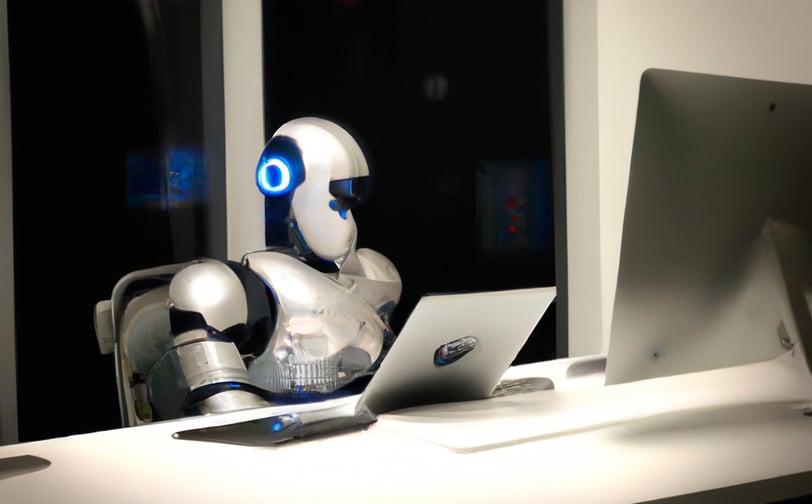How AI is changing the way we approach UX/UI design
When we think of artificial intelligence (AI), we often picture a future in which robots have taken over the world. But the truth is, AI is already making a significant impact on our daily lives, and nowhere is this more evident than in the field of user experience (UX) and user interface (UI) design.
Amber
3/29/20233 min read


When we think of artificial intelligence (AI), we often picture a future in which robots have taken over the world. But the truth is, AI is already making a significant impact on our daily lives, and nowhere is this more evident than in the field of user experience (UX) and user interface (UI) design.
In the past, designers had to rely on intuition, experience, and customer feedback to create effective UX/UI designs. But with the rise of AI-powered tools and technologies, designers now have access to a whole new range of capabilities that are changing the way they approach their work.
One of the most exciting ways that AI is impacting UX/UI design is through the use of personalized recommendations. With AI-powered algorithms, designers can now create interfaces that are tailored to each individual user’s needs and preferences. This means that users are more likely to find what they’re looking for, and to have a more positive experience overall.
Another area where AI is making a significant impact is in natural language processing (NLP). With NLP, designers can create interfaces that can understand and respond to user queries in natural language. This means that users can interact with interfaces in a more intuitive way, and get the information they need more quickly and easily.
And of course, we can’t forget about predictive analytics. With the help of AI-powered analytics tools like ChatGPT, designers can analyse user data and make more informed decisions about how to improve their designs. This means that UX/UI designs can be continually refined and optimized over time, resulting in better user experiences and more successful products.
But with all these new capabilities come new challenges. As AI becomes more prevalent in UX/UI design, designers will need to adapt their skills and workflows to take advantage of these tools while also maintaining a human touch. After all, no one wants to interact with a machine that feels cold and impersonal.


So, how can designers strike the right balance between AI and human intuition? One approach is to use AI as a tool to augment their existing skills and knowledge. By combining AI-powered insights with their own experience and creativity, designers can create interfaces that are both personalized and intuitive.
Another key challenge for designers is to ensure that AI-powered interfaces remain accessible and inclusive for all users. This means taking into account factors like language, cultural context, and accessibility needs when designing interfaces. It also means being aware of the potential biases that can be introduced by AI algorithms and taking steps to mitigate these risks.
Conclusion
In conclusion, the rise of AI in UX/UI design is both exciting and challenging. While AI-powered tools and technologies are opening up new possibilities for designers, they also require us to rethink our approach to design and to be mindful of the potential risks and limitations of these tools. By using AI as a tool to augment our own creativity and expertise, we can create interfaces that are both personalized and accessible, and that deliver exceptional user experiences for all.
And let’s not forget about the importance of continuous learning and adaptation. As AI technologies continue to evolve and improve, designers will need to keep up with the latest trends and best practices in order to remain effective and relevant. This means being open to new ideas and approaches, experimenting with new tools and techniques, and staying curious and engaged in the design community.
Finally, I want to leave you with one last thought: AI may be changing the way we approach UX/UI design, but it will never replace the power of human creativity, empathy, and intuition. As designers, it is up to us to harness the potential of AI while also staying true to our own unique perspectives and abilities. With this mindset, we can create designs that are truly exceptional, inspiring, and impactful for users all around the world.
Why not check out this article on Medium
And, if you like it, hit the follow button while you're there to keep up to date with my writing.


CONTACT
+44 0203 818 0987
contact@amberdesign.online
